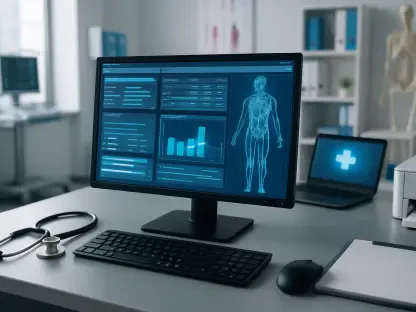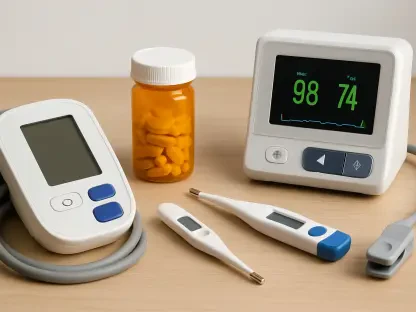Sussex has achieved a groundbreaking milestone in the field of healthcare by attaining the highest national ranking for admission avoidance in virtual wards. Virtual wards offer a modern solution for patient care, enabling more people to receive treatment at home instead of in a hospital, through advanced monitoring technology and dedicated healthcare teams. This initiative has proven to be a game-changer in enhancing patient outcomes and easing the burden on hospital resources. The concerted effort by various healthcare trusts in Sussex has pushed the boundaries of traditional healthcare delivery and paved the way for a transformative approach to treating patients with acute medical needs.
Virtual Wards: A Revolution in Patient Care
Virtual wards in Sussex are a collaborative effort among several healthcare trusts—including Sussex Community Foundation NHS Trust, East Sussex Health Care NHS Trust, University Hospitals Sussex, and Surrey and Sussex Healthcare NHS Trust. These virtual wards focus on managing conditions such as respiratory illnesses, frailty, heart failure, and other acute medical needs. By providing treatment at home, patients benefit from a quicker recovery, less exposure to hospital-related complications, and a greater connection with their daily routines and family support. This model is crafted to enhance the holistic well-being of patients, ensuring they receive high-quality care from the comfort of their own homes.
The success of Sussex’s virtual wards is attributed to the integration of wearable devices, oxygen and blood pressure monitors, and secure digital platforms. These tools enable healthcare professionals to monitor patients remotely, receive real-time updates on their condition, and implement timely interventions. This approach not only reduces unnecessary hospital admissions but also improves patient outcomes by allowing for prompt and precise medical attention without the need for physical hospital visits. The virtual ward model has shown that patients recover faster in familiar surroundings, maintaining daily routines and staying connected with their loved ones, which plays a crucial role in reducing complications such as infections, delirium, and falls.
National Recognition and Expansion
As of March, Sussex’s virtual wards have achieved an 81% admission avoidance rate, the highest in the UK. This exceptional performance means that the majority of patients who would typically require a hospital stay can now be treated effectively within their homes. Referrals to these virtual wards are rising, with primary care providers playing a crucial role in direct patient referrals. The success and best practices from Sussex are now being shared with other Integrated Care Boards across the region, demonstrating the potential for this model to be replicated and adapted to different healthcare environments.
Over recent months, Sussex has significantly expanded its Virtual Ward program, increasing the number of operational beds to 282, surpassing the initial target of 249. Despite being under the regional and national averages in some areas, continuous efforts are being made to enhance bed availability. Snapshot occupancy rates have consistently exceeded 80%, with recent figures reaching an impressive 89%, which outperforms regional and national averages. This expansion reflects the growing confidence in and acceptance of the virtual ward model as a viable alternative for patient care, ensuring that more individuals have access to this innovative healthcare solution.
Impact on Hospital Resources and Patient Flow
The uptake of virtual wards has grown significantly since November, reflecting rising confidence in this model of care. These advancements have optimized patient outcomes by reducing lengthy hospital stays and improving overall patient flow through the healthcare system. Dr. James Ramsay, Chief Medical Officer for NHS Sussex, emphasized that virtual wards not only help patients receive efficient care at home but also free up hospital beds for those with critical needs. This dual benefit underscores the importance of virtual wards in addressing both patient-centric and system-wide challenges, making it a pivotal component of modern healthcare delivery.
By reducing emergency admissions and shortening A&E wait times, the virtual ward model has significantly relieved the pressure on the NHS system. This has also improved ambulance response times and overall efficiency within healthcare facilities. As a result, patients can expect faster and more effective medical attention, and healthcare providers can allocate resources more effectively. The success of Sussex’s virtual wards demonstrates the potential for this model to revolutionize patient care and hospital resource management across the UK and beyond, setting a benchmark for other regions and healthcare systems to follow.
Digital Innovations for Proactive Care
Sussex continues to innovate by shifting from reactive to proactive care through virtual wards. Launching a new digital contract with Doccla, the leading remote patient monitoring network, will soon enable continuous monitoring of long-term or high-risk patients. This move ensures early detection of potential health deteriorations, allowing timely interventions and stronger support for independence at home. Dr. Adam Zacks, Joint Clinical Lead for Virtual Wards, highlights this as a transformative step towards proactive patient care. By leveraging advanced digital technologies, Sussex is leading the way in preemptive healthcare solutions, focusing on maintaining patients’ health and preventing more severe conditions from developing.
The partnership with Doccla represents the next phase in the evolution of virtual wards, emphasizing the importance of early intervention and continuous monitoring. This proactive approach allows clinicians to identify early signs of deterioration and intervene before a hospital admission is needed, ensuring timely, personalized care at home. The digital contract with Doccla is not just about improving patient monitoring; it’s about fostering a new paradigm in healthcare where prevention and early detection are key components of patient care. This progressive strategy aligns with the broader goals of reducing hospital admissions and enhancing patient well-being through innovative, technology-driven solutions.
Multidisciplinary Teams and Comprehensive Support
Sussex has marked a pioneering achievement in healthcare by securing the highest national ranking for admission avoidance through virtual wards. These virtual wards provide an innovative approach to patient care, allowing more people to receive necessary treatments at home rather than in a hospital setting. This is facilitated by advanced monitoring technologies and dedicated healthcare teams, ensuring patients receive optimal care remotely. The results have shown significant improvements in patient outcomes while simultaneously relieving the strain on hospital resources. This initiative demonstrates a shift in traditional healthcare delivery, thanks to the collective efforts of various healthcare trusts in Sussex. Through this pioneering approach, Sussex has set a precedent for managing patients with acute medical needs, leveraging technology and a dedicated workforce. The success of this model suggests a transformative potential in healthcare, where high-quality patient care can be maintained outside the conventional hospital framework, making treatment more accessible and efficient.









